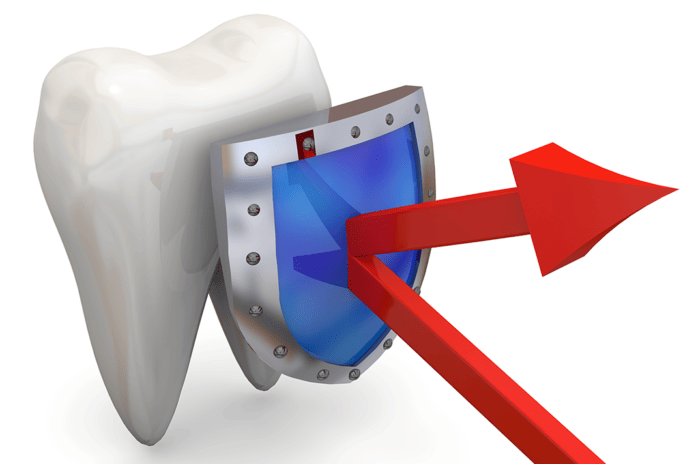As Dental Professionals, we always seem to be looking for more options to assist our patients in achieving the best oral health. This is what I feel makes us so good at our jobs, how much we really care. Silver Diamine Fluoride (SDF) is an FDA-cleared liquid that has been shown to kill pathogenic organisms in decaying dentin and enamel. Although more scientific information is being obtained, the results can speak for themselves. If used in a responsible manner, SDF can be a great tool in the dental office to help fight the rampant spread of tooth decay. The most negative effect of SDF is that is stains the decay affected area, so it must be used in areas that are not in the smile zone, or with patient or parent/guardian permission.
Ideally, removing decay and restoring the affected area with amalgam, composite for even a crown, is the ultimate treatment. But that is not always affordable, or even practical. Depending on the age of a patient, and even their financial situation, it may be necessary for the clinician to find another solution.
Silver Diamine Fluoride is easy to apply and may be a helpful solution to several problem situations. I will discuss a few scenarios that have worked in our office. This may help others find a comfortable use for this product.
One of the most common uses that we have found for SDF is in deciduous teeth. We generally recommend that children under the age of 9 get teeth restored unless there are circumstances that may cause us to alter our treatment. For example, a child presents for a routine prophy and exam with BWX and fluoride treatment. The patient is found to have incipient decay on the mesial occlusal of A and distal occlusal of B; these areas are currently very small. We inform the parents/guardian of the decay and give a treatment plan of what the cost will be to restore with amalgam or composite filling material. If the parent/guardian asks if there is anything else we can do, because they know in a couple of years, these teeth will be lost and replaced with permanent teeth. We explain that we have a product called Silver Diamine Fluoride. Although it will stain the area of decay, the decay is not in a highly visible area, so it would be worth applying in these areas to attempt to arrest the decay process. We explain that generally, we like to see the patient back in just a short period of time (a week or two) to check area and most likely re-apply for best results. We review oral hygiene instructions as well as nutritional counseling to help ensure the patient, as well as parents, can help themselves in the prevention of future carious lesions.
Another example of a candidate for SDF: A geriatric patient presents to the office for a routine prophy and exam, with BWX. The patient is found to have decay present under a crown on the mesial of #15. We treatment plan for a new crown, and discuss with the patient that although restoring the tooth is the best option, we have another possibility that the patient can consider. We explain how SDF is applied and how it works to arrest the decay. Because some of our elderly patients are on fixed incomes, this less expensive option is often the one that they will choose. We will review oral hygiene instructions and nutritional counseling, and in many cases, we will also discuss more frequent prophy appointments to monitor the patient more closely and help prevent the decay process.
The next example is of another geriatric patient that is currently on a three-month recall due to periodontal disease. This patient presents with decay on the mesial root surface of #24. Although the area is in the smile zone, this patient does not want to spend the money on a composite restoration. We counsel the patient on their options, which includes information on SDF, as well as discussing how the area will appear after application, because of the staining properties of SDF. We review oral hygiene instructions and nutritional counseling.
I believe that restoring teeth, is by far, the best option. But as healthcare providers, we must educate as well as explore alternatives to give our patients the best chance at retaining their dentition for the duration of their lives.












